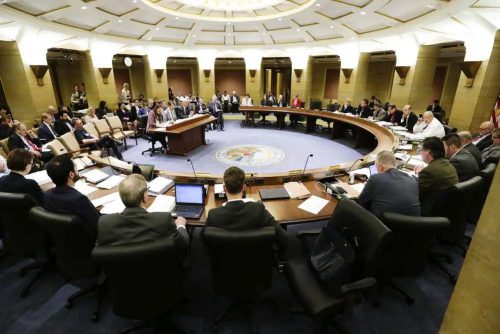Every trauma center is required to have two specific committees: a multidisciplinary trauma performance improvement committee (PI) and a trauma operations committee (ops). However, a common question is, “How often do my committees need to meet?” Let’s start with your PI committee.

The answer, of course, is “it depends.” There is no cookie-cutter, one-size-fits-all answer. In this post, I’ll review the six factors you must consider when designing your meeting schedule.
Total Patient Volume
The number of patients seen at your center directly impacts your PI committee meeting schedule. The more patient encounters, the more likely that performance issues will arise and the more likely that some will need to be aired at the full committee meeting.
PI Issue Volume
What is the total number of PI items that your program identifies over time? Busy Level I centers may find five or ten items
every day!
In contrast, an average Level IV center may only find a PI issue to pursue every few weeks. This has a noticeable impact on how often these items need to be escalated, analyzed, and discussed at your PI meeting.
PI Issue Severity
What fraction of your PI cases actually require discussion by the full committee? How many can be processed and closed by the Trauma Program Manager alone (primary review) or with the Trauma Medical Director (secondary review)? Only complex cases that require the input of multiple liaisons actually need to go to the committee.
Alternate review pathways
There are more options for review other than the primary and secondary pathways mentioned in the previous paragraph. Typical options would be direct correspondence with a liaison for simple one-service issues or discussion (and good documentation) from a morbidity and mortality conference. The use of these alternatives will reduce the number of potential cases for your PI committee and decrease the overall number of meetings needed.
Age of your Trauma Program
Are you part of a mature, long-standing trauma center? Or is your program newly minted by the American College of Surgeons or state designating agency? Newer centers benefit from sending more items to the PI committee to build engagement of the liaisons and other attendees. More frequent meetings help get them used to the review process and the frank but friendly discussions required for effective PI review.
PI Committee “Leftovers”
How often do you need to table issues or cases until the next meeting because you ran out of time? If you are chronically short of time to discuss all the agenda items, it’s time to either make the meeting longer (groan!) or schedule them more frequently.
Bottom line: These six factors listed above must be considered when choosing your meeting schedule. Here are my starting suggestions for the ideal frequencies for adult trauma centers:
- Level I – monthly
- Moderate to high volume Level II – monthly
- Lower volume Level II – bimonthly
- Level III – bimonthly to quarterly
- Level IV – quarterly
Most pediatric centers admit lower volumes and less complex patients, which usually only warrants a bimonthly meeting.
Remember, these are starting meeting frequencies only.
If you are a new trauma center, consider more frequent meetings for your first year to get your attendees used to and invested in the process. And if you need more cases to fill the meeting or have more hold-overs until the next meeting, adjust your calendar appropriately.
In my next post, I’ll cover this same topic for your trauma operations committee.

